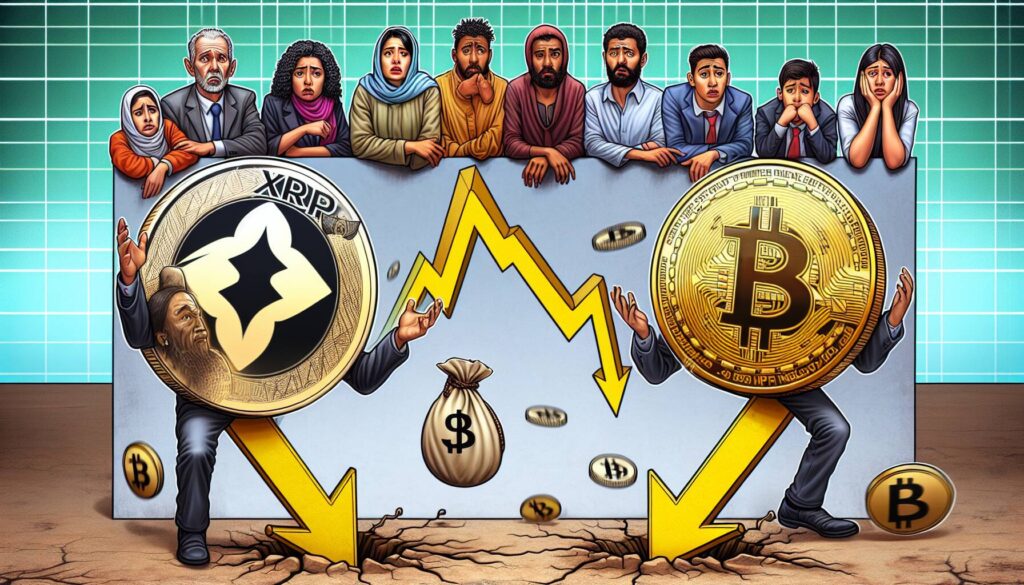The cryptocurrency market experienced a significant boost on Friday, reflecting a strengthened global risk appetite. As traders navigated the encouraging news surrounding easing U.S.–Japan trade tensions, both cryptocurrencies and traditional equity markets saw notable gains. The MSCI Asia Pacific Index rose by 0.5%, marking its fifth consecutive day of growth, while Japan’s Nikkei-225 soared 2.3% following comments from chief trade negotiator Hiroshi Suzuki about the U.S. intending to reduce tariffs on cars and universal goods.
In contrast, oil prices are facing their steepest weekly decline since June, primarily driven by rising U.S. inventories and decreased demand reflected in Chinese import data. Brent and WTI crude oil benchmarks slipped over 4% this week, underscoring the challenges within the oil market.
“Bitcoin is currently experiencing a narrow trading range, with support at $112,000 and resistance at $120,000,” noted FxPro chief market analyst Alex Kuptsikevich, providing insight into the cryptocurrency’s current positioning.
Turning back to cryptocurrencies, the total market capitalization surged by 3% to reach an impressive $3.76 trillion over the last 24 hours. Major altcoins led this surge, with Ether (ETH) increasing by 7.3% to $3,935, a 12% jump for XRP (XRP) to $3.36, and Solana (SOL) appreciating by 4.7% to $175.19. Additionally, dogecoin (DOGE) climbed 8.8% to settle at 22 cents. However, Bitcoin (BTC) lagged behind, only rising 1.9% to $116,781 amidst daily trading volume of $38.8 billion.
Despite the upward momentum, recent data from Glassnode indicates a shift in Bitcoin market sentiment from “euphoria” to a more subdued outlook. Notably, inflows into Spot Bitcoin ETFs have decreased by nearly 25%, alongside reductions in network activity and transaction fees. This shift is complemented by a trend toward increased options hedging for Bitcoin beneath the $100,000 mark as traders brace for a potential quiet summer ahead.

Global Market Trends and Their Impacts
Key points highlighting the current global market trends and potential impacts on readers:
- Strengthening Market Sentiment:
- Global risk appetite improved with gains in crypto, equities, and gold futures.
- Implication: Increased confidence may lead to more investment opportunities.
- Trade Tensions Easing:
- U.S.–Japan trade talks yielded positive outcomes, impacting stock markets positively.
- Implication: Better trade relations can boost economic growth and consumer confidence.
- Oil Prices Declining:
- Oil headed for its steepest weekly decline since June due to rising U.S. inventories.
- Implication: Lower oil prices may lead to reduced transportation costs for consumers.
- Crypto Market Dynamics:
- Total crypto market cap rose 3%, led by major altcoins like Ether and XRP.
- Implication: Growing altcoin interest may diversify investment strategies.
- Bitcoin’s Market Positioning:
- Bitcoin remains range-bound with warnings of cooling demand and rising hedging activity.
- Implication: Investors may need to be cautious and re-evaluate risk exposures in crypto assets.
“Market sentiment has shifted from ‘euphoria’ to ‘cooling off,’ indicating a more cautious approach to investments.”
Market Movements: A Comparative Analysis of Recent Developments
On the heels of a strengthening global risk appetite, recent market trends show a complex interplay of gains and challenges across various sectors. While crypto assets, equities, and gold futures experienced upward momentum, oil prices faced significant declines, suggesting a divergence in investor sentiment and asset performance. This volatility presents both competitive advantages and disadvantages for different market players.
One major advantage for equities and cryptocurrencies is the positive sentiment fostered by easing trade tensions between the U.S. and Japan. Such developments tend to invigorate investor confidence, leading to increased capital inflows, especially evident in the recent surge of altcoins like Ether and XRP. However, as illustrated by Bitcoin’s sluggish performance despite a broader market rally, the crypto sector remains susceptible to cooling demand and heightened hedging activities, indicating that not all cryptos benefit equally from improved risk appetite.
Conversely, the oil market’s decline presents challenges, with a notable pressure stemming from rising U.S. inventories and disappointing import data from China. This steep drop in oil prices could create significant headwinds for energy companies already grappling with fluctuating global demand. Investors in energy stocks may be forced to reassess their strategies, balancing potential losses against opportunities in more robust sectors like technology or digital assets.
Stakeholders across these markets could find themselves in increasingly complex scenarios as they navigate these shifts. For institutional investors focused on cryptocurrency, the data suggesting a pivot from “euphoria” to a more tempered outlook could necessitate a reevaluation of risk exposure, especially with Bitcoin’s constrained price range and falling ETF inflows. On the other hand, those invested in equities may find newfound buoyancy, leveraging current momentum to capitalize on favorable market conditions.
Overall, while the recent positive indicators for stocks and cryptocurrencies create potential benefits for investors, the underlying issues such as cooling Bitcoin demand and oil market vulnerability illustrate the need for careful consideration in this dynamic financial landscape.

















